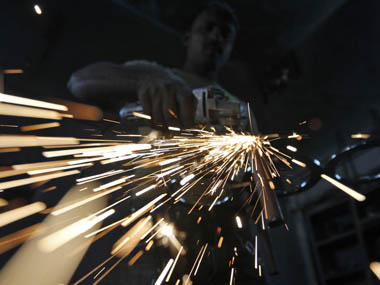The biggest challenge for the Narendra Modi government at this stage is clearly to kick-start the dormant investment engine in the economy. The world doesn’t seem to be convinced on such a change happening so far, even though the prime minister has been claiming overseas that the Indian economy has turned a corner after the NDA government’s policy steps. If the world is becoming pessimistic on India’s growth story, there is a reason for it: Investment activity has remained subdued and corporate earnings have logically taken a beating. Standard & Poor’s (S&P), in a study, has said the investment growth has remained weak in the country on account of stressed corporate balance sheets. The much-discussed policy logjam and bureaucratic mess created by the UPA’s 10-year rule has done serious damage and takes a lot of effort to repair this. “Despite the recent upward revision to its gross domestic product growth data, India’s weak investment (and relatively flat earnings) is clearly apparent in the micro data," the rating agency has said after studying four segments – consumer discretionary, energy, industrials, and materials (including mining). The data was taken from the company’s financial database. The government had recently revised India’s fiscal year 2015 GDP growth forecast to 7.4 percent based on the gross value added (GVA) methodology, a sharp revision from the earlier estimate which was based on the old method. [caption id=“attachment_2164803” align=“alignleft” width=“380”]  Reuters image[/caption] But, as Firstpost noted before the poor growth in key indicators such as bank credit, manufacturing growth, auto sales and consumer spending, the GDP numbers stand at odds with the GDP number. The new method of calculation, thus, shows a sharp growth in the economy, while the key economic indicators that should support it have lagged way behind and somewhat points in the other direction, posing credibility risk for the government’s number. To be sure, S&P acknowledges the positive wave created by Modi that has revived the sentiment but says it is yet to show results on the ground. But, the agency doesn’t appear to be too convinced about his ability to revive stalled projects and get back investments. “With the Modi government still seeming to spur confidence generally, we don’t know if previously funded assets will be activated and, even more important, if earnings will pick up," the ratings agency said. Surely, things have indeed changed for the better for the economy backed by the efforts by the NDA government to unclog the system, cut down subsidies and bring in foreign investments, but it is too early to begin the celebrations, as yet. The critical part of business confidence translating to action is missing yet. This is something even the International Monetary Fund (IMF) highlighted recently, when it warned about the health of India’s banks that is directly linked to corporate performance. The fund pointed out that companies with constrained balance sheets and poor repayment ability — can aggravate the bad loan problem. “A significant share of debt in Argentina, Brazil, China, India, Nigeria and Turkey is owed by firms with relatively constrained repayment capacity in terms of interest coverage ratios,” the report said. The corporate earnings of Indian companies have remained under pressure for quite sometime and any revival in industry performance can happen only if investments pick up in fund-starved sectors — mainly infrastructure and manufacturing activities. Moody’s Investors Service, which recently upgraded India’s growth outlook to positive from stable and retained the sovereign rating at Baa3, based on assumptions that the actions of policymakers would strengthen the country’s economic growth, too had warned about the threat arising out of a weak banking sector. “This poses sovereign credit risks because of the banking sector’s role in financing growth as well the government’s deficit through its purchase of government securities and the contingent liabilities due to government’s ownership of a major portion of banking sector,” the agency said. As S&P warns, despite the rosy picture painted by the new measurement of GDP, so far there are no strong signs of investment activity picking up in a major way, neither are there any new projects happening. Crisil, the Indian subsidiary of S&P, in a recent report said Indian companies’ revenue growth is expected to fall to 2.5 percent on a year-on-year basis in the fourth quarter ending March, compared with a growth of 5.4 percent registered in the third quarter. The February Index of Industrial Production (IIP) numbers, which registered a 5 percent growth from 2.8 percent in January showed some encouraging improvement in the output growth, but one needs to wait and watch whether this growth is sustained. Reviving investments isn’t an easy exercise unless the actual operating environment on the ground changes in a major way. Concerns of large investors relating to land acquisition, environmental clearances and a friendly tax regime still remain and needs to be addressed if this has to happen. Listening to the warning signals and correcting course would only do well for the Modi government. If it refuses to do so, the government faces a trust deficit in front of large investors on what the data show and what the ground reality is. That wouldn’t augur well for an aspiring economy.
Correcting the course would only do well for the Modi government. If it refuses to do so, it faces a trust deficit in front of investors
Advertisement
End of Article


)

)
)
)
)
)
)
)
)



